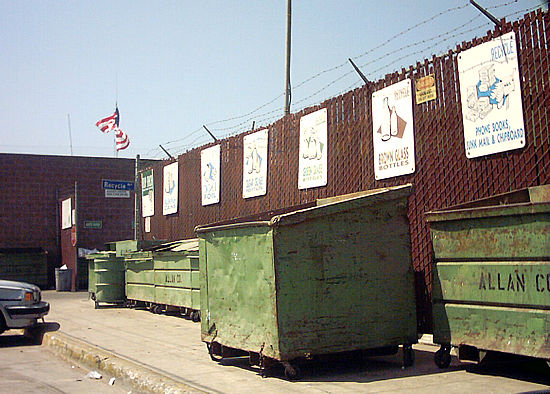|
Rechargeable Battery Recycling Corporation
Call2Recycle is a rechargeable battery and cellphone collection program. History The program launched in the U.S. in 1996 (1997 in Canada) as ''Charge Up to Recycle!'' to collect and recycle Nickel Cadmium (Ni-Cd) batteries. In 2001, the program expanded to include all consumer rechargeable batteries, adding Nickel Metal Hydride (Ni-MH), Lithium Ion (Li-Ion), and Small Sealed Lead Acid (SSLA/Pb). It was renamed Call2Recycle in 2004 to reflect the program's expanded focus to also collect cellphones, which contain rechargeable batteries. In 2008, Call2Recycle added a fifth chemistry, Nickel Zinc (Ni-Zn), to its collection program. In 2009, it became the first battery program to receive e-Stewards recognition by the Basel Action Network (BAN) which ensures that waste is not exported to developing countries. In 2012, the program became the first of its kind to receive Responsible Recycling (R2) certification. See also *Electronic waste *Recycling in Canada *Recycling in the United ... [...More Info...] [...Related Items...] OR: [Wikipedia] [Google] [Baidu] |
Electronic Waste
Electronic waste or e-waste describes discarded electrical or electronic devices. Used electronics which are destined for refurbishment, reuse, resale, salvage recycling through material recovery, or disposal are also considered e-waste. Informal processing of e-waste in developing countries can lead to adverse human health effects and environmental pollution. Electronic scrap components, such as CPUs, contain potentially harmful materials such as lead, cadmium, beryllium, or brominated flame retardants. Recycling and disposal of e-waste may involve significant risk to the health of workers and their communities. Definition E-waste or electronic waste is created when an electronic product is discarded after the end of its useful life. The rapid expansion of technology and the consumption driven society results in the creation of a very large amount of e-waste. In the US, the United States Environmental Protection Agency (EPA) classifies waste into ten categories: # Large ... [...More Info...] [...Related Items...] OR: [Wikipedia] [Google] [Baidu] |
Recycling In Canada
This article outlines the position and trends of recycling in Canada. Since the 1980s, most mid to large municipalities in most provinces have recycling programs, relying on curbside collection with either bins, boxes, or bags. These systems are not standardized, and the specific process differs for each province. Certain provinces have container-deposit systems in place for bottles, cans, and other beverage containers. As of 2012, Canada has a recycling rate around 26.8%. History In 1981 Resource Integration Systems (RIS) in collaboration with Laidlaw International tested the first blue box recycling system on 1500 homes in Kitchener, Ontario. Due to the success of the project the City of Kitchener put out a contract for public bid in 1984 for a recycling system citywide. Laidlaw won the bid and continued with the popular blue box recycling system. Today hundreds of cities around the world use the blue box system or a similar variation. By province Municipalities and provinc ... [...More Info...] [...Related Items...] OR: [Wikipedia] [Google] [Baidu] |
Recycling In The United States
There is no national law in the United States that mandates recycling. State and local governments often introduce their own recycling requirements. In 2014, the recycling/composting rate for municipal solid waste in the US was 34.6%. A number of U.S. states, including California, Connecticut, Delaware, Hawaii, Iowa, Maine, Massachusetts, Michigan, New York, Oregon, and Vermont have passed laws that establish deposits or refund values on beverage containers while other jurisdictions rely on recycling goals or landfill bans of recyclable materials. National legislation On a national level, the United States Environmental Protection Agency (EPA) oversees a variety of waste issues under the mandate of the Resource Conservation and Recovery Act. These include regulation of hazardous wastes, landfill regulations, and setting recycling goals. The Department of Commerce is also responsible for helping to develop markets for recycled goods. State and local legislation More specific recyc ... [...More Info...] [...Related Items...] OR: [Wikipedia] [Google] [Baidu] |


